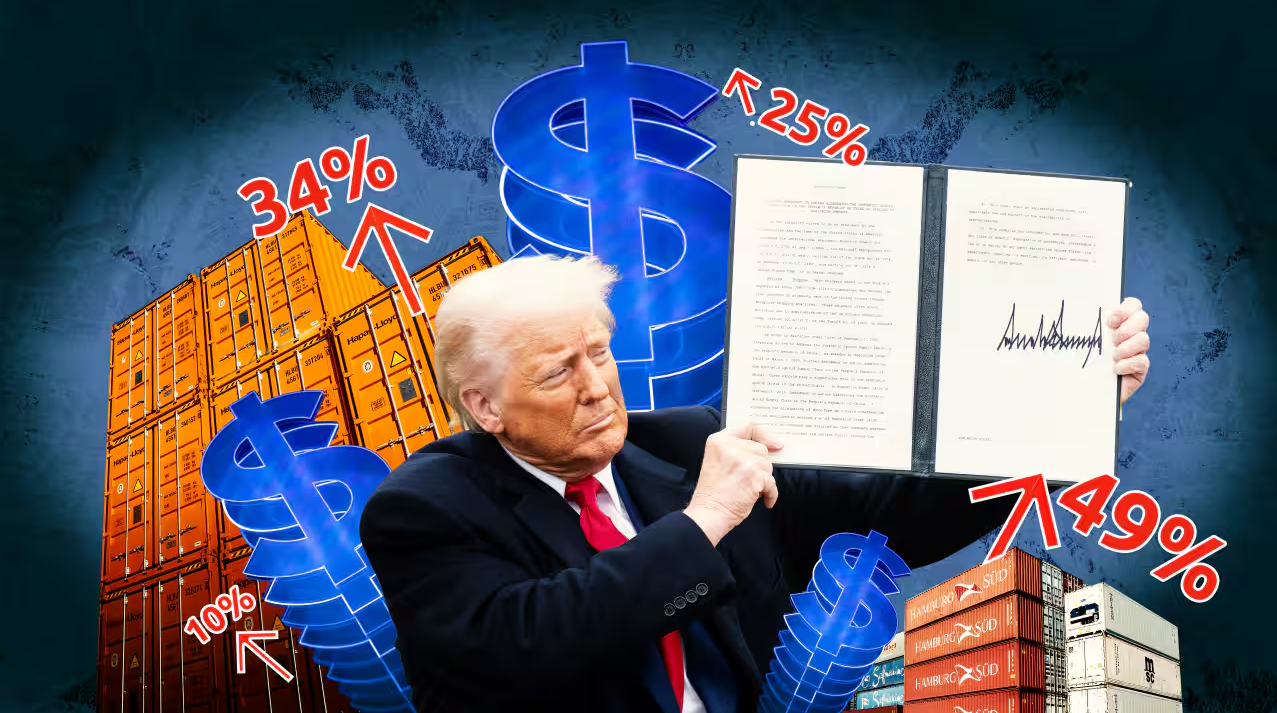Donald Trump might briefly bend the rules of economics, but their core endures. Tariffs could spark a U.S. manufacturing revival, but it will be fleeting. And the fallout — higher costs of living, strained global ties and a fractured world economy — seems all but certain.

President Trump announced sweeping tariffs targeting most countries globally, followed by a declaration of a "national emergency", April 3, 2025. (Photo: EPA, AAP, SBS / Kent Nishimura)
On April 2, U.S. President Donald Trump held a news conference in the White House Rose Garden, joined by a special cadre of American industrial workers from traditional manufacturing states. These workers took the spotlight, voiced gratitude to Trump and lauded his policies for rekindling their hope.
In a dramatic flourish, Trump proclaimed the day to be “Liberation Day” for American businesses and vowed that U.S. companies would henceforth shed the shackles of an unfair competitive landscape. The day heralded a resurgence of American manufacturing to “greatness.” But whether this grand vision will materialize is shrouded in uncertainty.
That same day, the U.S. stock market rode a rollercoaster. The Dow Jones Industrial Average, Nasdaq Composite and S&P 500 all endured sharp intraday plunges, only to rebound as the session wore on. By the close, all three indices landed in the green: the Dow at 42,225.32 points, up 0.56%; the S&P 500 at 5,670.97 points, up 0.87 percent; and the Nasdaq at 17,601.05 points, up 0.67 percent. This dip-and-recover pattern mirrored investors’ mixed emotions — early unease over tariff uncertainties giving way to cautious optimism fueled by Trump’s upbeat promises.
In his address, Trump boasted of reversing the Biden-era’s high inflation since reclaiming office, citing steep declines in the prices of energy, cars, eggs and other essentials. He framed these as things Biden had aspired to but failed to deliver, while he had succeeded. Trump further claimed his new tariff policy would rake in $6 trillion over the next decade — a figure met with skepticism, smacking more of political bravado than data-driven forecasting.
The market’s fluctuations hinted at deeper tensions. Investors’ tariff-related jitters were briefly eclipsed by Trump’s fiery rhetoric, as he promised swift repatriation of manufacturing through steep levies. Economists, however, warn that the policy’s pitfalls could surface as early as midyear. Economic principles are stubborn: Even if manufacturing enjoys a fleeting boost, adverse effects — whether in that sector or beyond — are likely to emerge. History offers a sobering precedent: The Dingley Tariff Act of 1897, championed by President William McKinley, jacked up average tariff rates to 46 percent, inflating import costs and hiking U.S. living expenses by nearly 33 percent over a decade. Ordinary families felt the pinch, while small and medium-sized businesses dependent on imported inputs, alongside consumers, suffered most. Worse, the high tariffs ignited global trade spats, with retaliatory measures amplifying economic strain.
Though Trump’s tariff stance currently garners some domestic backing, scholars and industry leaders largely predict a lose-lose scenario. Doubts swirl around the policy’s practicality, especially its tariff rate calculations. At the news conference, Trump brandished a chart showing the “exorbitant” tariffs other nations allegedly impose on the U.S. — figures later exposed as flimsy and apparently concocted by dividing the U.S. trade deficit with each country by its exports to America.
Take Indonesia: Trump pegged its tariff at 64 percent, likely derived from a $17.9 billion deficit divided by $28 billion in exports. More glaringly, he accused South Korea of imposing a 50 percent tariff, despite the U.S.-Korea Free Trade Agreement (effective 2012) that slashed bilateral tariffs to near zero by 2025 — an impossibility that underscores the shaky math.
If Trump doubles down on this high-tariff gambit, several risks loom large:
• First, frayed alliances. His policy spares no one. It targets rivals and allies alike with punitive duties for supposedly exploiting the United States. The EU, Canada, Mexico and others have hinted at tit-for-tat retaliation. While compromises might dull the edge of such responses, Trump’s “fortress America” ethos — indiscriminately taxing the world — will stoke resentment among allies. Even if muted publicly, this could widen strategic fissures, such as reduced U.S. economic dependence or regional blocs forming fast elsewhere.
• Second, a blow to the WTO. Trump’s unilateral tariffs flout the World Trade Organization’s bedrock principles of non-discrimination and reciprocity. If the U.S. erodes the WTO’s clout, others may follow, splintering global trade and hitting smaller economies hardest. Over time, the WTO could lose its dispute-resolution teeth, further souring the trade climate.
• Third, a threat to dollar supremacy. The greenback’s reserve status thrives on robust global trade and investment. Heavy onshoring of manufacturing could shrink demand for imports, curbing the dollar’s transactional role. If domestic overproduction collides with export declines because of tariff walls, the U.S. might push for lower foreign tariffs to dump surplus goods, thereby igniting new trade wars and even currency wars. The Smoot-Hawley Tariff Act of the 1930s, which gutted global trade and U.S. exports, deepened the Great Depression. Today, a waning dollar footprint paired with overcapacity could stoke inflation or stagflation, imperiling U.S. hegemony.
History’s lessons vary by teller, but economic rhythms hold steady. Trump might briefly bend these rules, but their core endures. Tariffs could spark a fleeting U.S. manufacturing revival, yet the fallout — higher costs of living, strained global ties and a fractured world economy — seems all but certain.